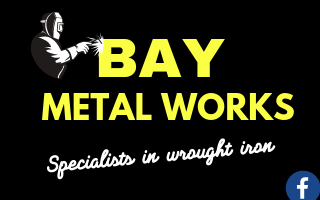The Daily Mail journalist Quentin Letts recently wrote, “We’re the last generation to make a living from newspapers”.
Certainly journalism is changing. Once journalists held an important role in society. Their jobs were well-paid and respected and were seen as essential in ensuring that we all knew what was happening. They held local institutions such as the council, police and the courts to account, built up contacts and some even became local celebrities.
Now reporters in the old sense of the word are a dying breed. Few writers can make a good living from their work, yet there are still 84,000 people describing themselves as journalists, compared to 64,000 in 2015. However, the job is changing rapidly – journalism now has one of the highest rates of self-employment, the amount of commissioned work publications require has fallen and many outlets – particularly online – offer no payment at all. Consequently pay has fallen dramatically with journalists now earning around £20,000 a year, with one third being in receipt of benefits.
Fewer full-time journalists are now employed across the country and so print news has become far more superficial and is often just re-writes of press releases. Specifically, the number of court, council and in depth crime stories has diminished.
This change is, of course, the consequence of the rapid decline of local newspapers. It was always the case that the majority of press revenue came from print advertising at around 70 per cent, and it was this reliance which made newspapers so vulnerable when the internet took off in the early 2000s. While advertising spending still grew across the board, the exception was national and regional newspapers and magazines. Advertising just worked better online where it was fully searchable, up to the minute, always available and cheap or free. This shift in the marketplace saw the business model of newspapers undermined as almost three-quarters of newspaper advertising migrated online.
Newspaper sales had also been falling for years and so local and regional papers had no alternative but to cut costs in all departments and areas. Hundreds of towns across the UK lost their daily newspaper coverage with over 150 papers closing since 2008.
It has been suggested that, with less revenue, those newspapers still surviving became more sensitive to the needs of their remaining advertisers and less willing to challenge local business interests- for example, in contentious building developments. They also turned to other income generating methods which further necessitated caution in their dealings with the local ‘establishment’. Simultaneously, mergers and the centralisation of news gathering distanced newspapers from those communities they used to know so well.
It quickly became clear to the readership that reporters were spending less time building up contacts and digging deeper into stories. The loudest voices often then became the only voices. Disconnection to communities became obvious, for example, when local place names were misspelled.
At one time the local newspaper was the only place for a writer to have their work made known to a wider community. Many writers accordingly donated articles for no charge or for a very minimal fee, accepting that they were working for a profit-based business. Yet, the rise of the internet offered an alternative and some writers defected to these new platforms. They were attracted to the way these ‘hyper local’ sites focussed on a well-defined community and published mostly user-generated content written by local residents and activists.
The new media was often comprised of voluntary, non-profit enterprises or start-ups and could offer an emotional connection between the writer, audience and publisher. This partnership approach of being “one of us” welcomed contributors donating their work for little or no financial reward. This sector has always known how to look after and appreciate what are effectively volunteers.
Here was the rise of the citizen journalist who had an ear to the ground, an understanding of digital technology and a desire to become involved in discussions surrounding their own neighbourhood. By positioning themselves at the centre of their community, the hyper local journalist could also raise their own profile by presenting a supply of stories.
While traditional journalists increasingly come under pressure to provide copy to deadlines, citizen journalists worked when and if they wanted to. Not all of their copy was, of course, of a good quality but at least it was heart-felt and not target driven. With time and dedication a wide range of issues could be tackled in depth over an extended period. Increasingly the citizen journalist and the hyper local web site came to break stories for the local and national media.
The hyper local offered an alternative to the top-down management of communities, information and news. The days when a newspaper editor could decide on how a community should feel about a particular issue and expect to significantly influence opinion were over.
So the decline of the local traditional print media should be seen alongside the rise of the citizen journalist and the hyper local web site. While some would say that this leads to a deprofessionalising of journalism, others would argue that it’s a new form of democracy. We can no longer rely on traditional ‘gate keeping’ newspapers and their reliance on advertising revenue and press releases to inform us of challenges and opportunities. Hyper local websites, such as We Are South Devon, give us new ways to be active citizens. It’s now up to us to write and contribute and to make a difference to our own communities.






























